Let us know how you did!
The truth about wealth disparity in Los Cabos
In Los Cabos, wealth disparity in the form of luxury and poverty coexist, and while they’re not found side by side, you wouldn’t have to drive very far to see examples of each. The luxury is well chronicled, from the upscale coastal resorts that welcome four million tourists annually to the multi-million-dollar second homes with ocean views and access to world-class golf courses.
The poverty, which in its most extreme form includes makeshift settlements without electricity, water, or sewage services, is less chronicled for obvious reasons. It’s hard to look at, and indeed, the poorest neighborhoods of Los Cabos are seldom ever seen by tourists, except perhaps for those who are brought via taxi or private transportation along the toll road from the Los Cabos International Airport to Cabo San Lucas.
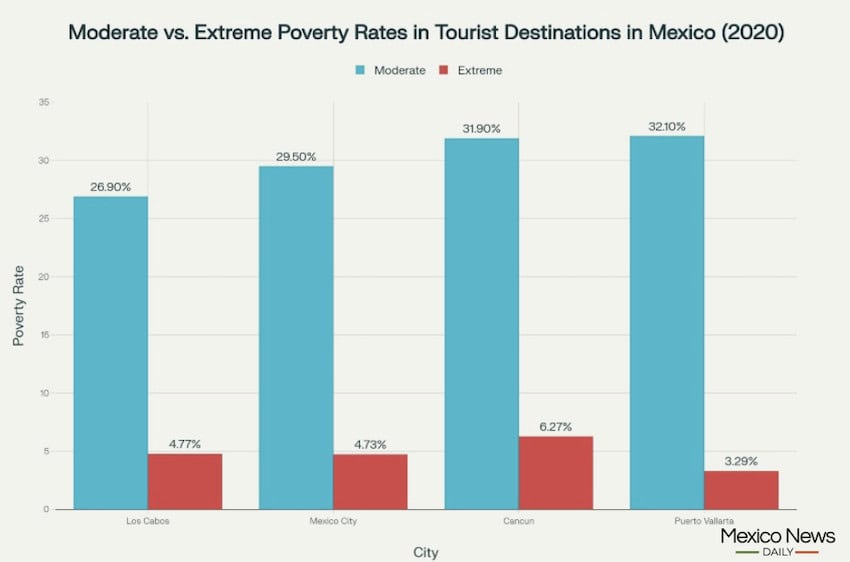
Where does Los Cabos rank in terms of poverty rates?
Los Cabos is hardly unique in having residents that represent both ends of the economic spectrum. The same could be said for virtually any city or popular tourist destination worldwide. However, the case in Los Cabos is unique and requires some site-specific context. Statistically speaking, for example, it has less poverty than any other major tourist destination in Mexico.
According to 2020 governmental statistics, the rate of moderate poverty is lower in Los Cabos (26.9%) than in Cancún (31.9%), Puerto Vallarta (32.1%), or Mexico City (29.5%). Not coincidentally, perhaps, Los Cabos residents also have the highest monthly salaries among these destinations, according to figures from the first quarter of 2025. Not only that, but Baja California Sur, the state in which Los Cabos is located, now has the lowest poverty rate among working individuals in Mexico.
These working conditions are a big part of the reason Baja California Sur, and Los Cabos in particular, have experienced such a massive population boom in recent decades. Over half the people in the state are originally from someplace else, but were drawn here by opportunities for abundant jobs and good wages, with many of these jobs found in the growing tourism sector.
Nonetheless, inequality exists, as President Claudia Sheinbaum pointed out during her last visit to the area in May. “When I was in Los Cabos, the last time I was campaigning, I said — and I still think so — that this terrible inequality seen in Los Cabos is perhaps seen in few places in the country, and that’s even though Mexico, and particularly during the neoliberal period, grew with this enormous inequality: hotel rooms costing hundreds of dollars, and the workers who work in these hotels barely have access to housing.”
Why affordable housing is such a problem in Los Cabos
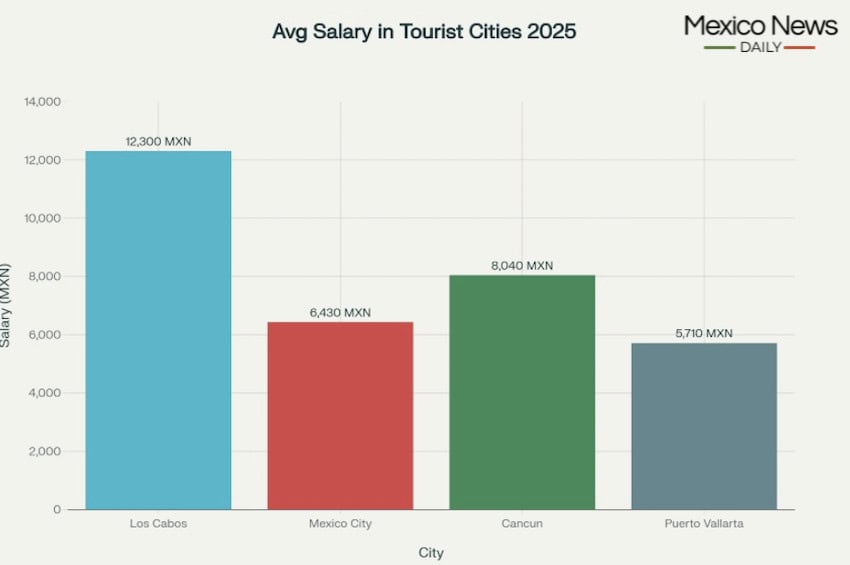
President Sheinbaum hit the nail on the head by zeroing in on housing as the main contributor to poverty in Los Cabos. It’s one thing to have a nice job and make a good living in a place with some of the highest average wages in the country, but what does it mean if you can’t find an affordable place to live?
Los Cabos’ astonishing 14.4% annual population growth has predictably led to a massive housing crisis, with an estimated 50,000 workers in the tourism sector unable to find an affordable home. Instead, they typically rent or live with family members, with rents, like prices for houses, skyrocketing in recent years based on the enormous demand.
Given this undeniable need, the president had earmarked Los Cabos to receive 17,400 new homes as part of her nationwide plan to increase affordable housing. Unfortunately, the Los Cabos portion of this plan has already been suspended due to the difficulty in buying land for the project. As you might expect, real estate is expensive in Los Cabos. The most extreme example of this is the 2.3-acre El Cielo 2 oceanfront homesite at Maravilla, which hit the market in 2022, listed at a cool $90 million.
Maravilla is one of the many real estate developments disproportionately targeted at the wealthy, most of whom didn’t live in Los Cabos before their purchase, and are seeking a secondary home rather than a primary residence. As of 2025, for instance, the average home price in the Los Cabos real estate market is now US $727,000, with the majority of these homes found in upscale developments situated along the coast.
However, even buying land in less desirable areas for locals comes at a steep price (2,500 pesos per square meter), one that Mexico’s government found hard to justify.

What extreme poverty looks like in Los Cabos
One of the consequences of the ongoing affordable housing crisis is that there are now thousands of people in Los Cabos living in high-risk areas. These are places like arroyos that are extremely vulnerable in the case of hurricanes, particularly when the homes there are makeshift ones that lack not only proper building materials and permits but also basic services.
How many of these makeshift communities are there? Way too many. There were 144 neighborhoods with “irregular settlements” as of 2023, with the vast majority of them found in either Cabo San Lucas (70) or San José del Cabo (52). The number of people living in these makeshift communities is still uncertain. But it is estimated to be around 20,000, a figure that roughly correlates with the 4.77% of Los Cabos residents believed to be living in extreme poverty.
However, it’s not just those living in the worst conditions who are victims of the housing crisis, as those in more stable neighborhoods are often paying an exorbitant amount of their monthly salaries to cover their rents.
What can be done about the housing problems in Los Cabos?
The ejidos (or communal ownership groups) that the government was negotiating with to buy land for new housing units have a right to seek a fair return for their properties based on the current real estate market, even if it makes finding solutions more difficult. But it’s also fair to say that the need for solutions is becoming increasingly more urgent.
Yes, the tourists who pay a pretty penny to visit Los Cabos and who account for a whopping 38% of the local GDP deserve great service and accommodations. On the other hand, the people who make this place their home, many of whom work in the hospitality industry, deserve something too, which at the very least is not just a decent salary, but an affordable place to live.
Chris Sands is the Cabo San Lucas local expert for the USA Today travel website 10 Best, writer of Fodor’s Los Cabos travel guidebook and a contributor to numerous websites and publications, including Tasting Table, Marriott Bonvoy Traveler, Forbes Travel Guide, Porthole Cruise, Cabo Living and Mexico News Daily. His specialty is travel-related content and lifestyle features focused on food, wine and golf.
‘Mary Joseph,’ ‘Little Town’ and ‘Holy Conception’: The unusual names I hear in Mexico
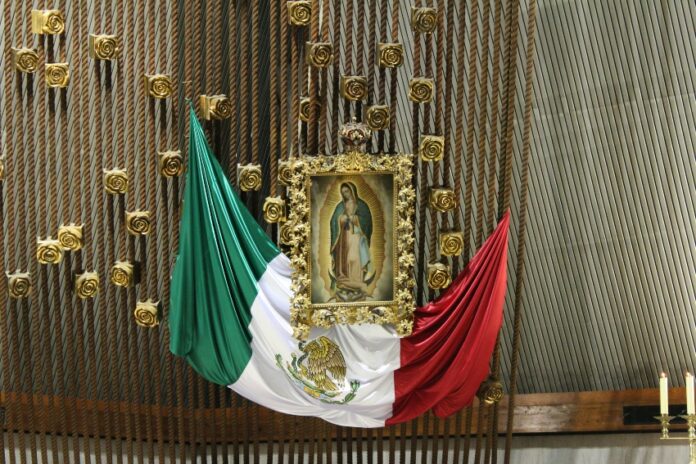
My 11-year-old just got a cat. It’s a long story, but it can be whittled down to this: she rescued a cat from her dad’s roof, they already have too many animals and we only have one. She wore me down, then I wore my cat-hating partner down — I am not proud of my behavior — and voila: We’ve got a cat now.
The cat’s name? “Firulais.” Oof. I was a little heartbroken, as I’ve been waiting years to name a cat Miau-ricio Garcés. But first, it’s a girl, and second, it’s my kid’s cat, so she gets naming rights.

But I truly can’t resist a ridiculous name for an animal, so I tacked on to it with the help of my editor. Our new cat has now been christened “Firulais de la Santísima Concepción.”
‘Pain and Solitude, please raise your hands’
If you’ve been in Mexico for long, you’ve probably heard quite a few… different names out there. Among all the Juans, Marías and Fernandos, there are some real gems to be heard. Even “normal” names can seem pretty odd once you really think about them: “Dolores” (Pain) and “Soledad” (Solitude/Loneliness), for example. Why would parents give these names to their children?
Well, there are reasons; we’ll get into them below.
Naming one’s child is important, of course; this is how one’s child will be known for the rest of their life, unless they go to the trouble of changing their name. By the way, I would not recommend doing this in Mexico.
So you want a name that’s strong but not pushy? Pretty, but not weak? Perhaps you wish for certain characteristics in your child and give them a name in that hope.
My daughter, for example, is named Lisa. Now, this is not a Mexican name, I know. But my sister’s name is Lisa, and I wanted a family name. I’ve also never met a woman named Lisa who wasn’t totally cool and original. And while it’s not common around here, it’s recognizable as a name, mostly thanks to “The Simpsons,” which is almost as popular here as it is in the U.S.
What’s in a name?
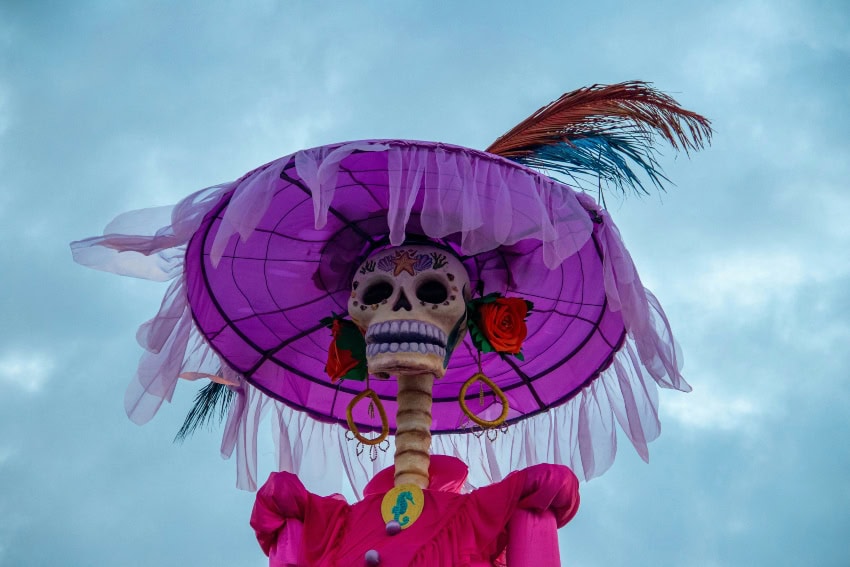
I lucked out in the name department, also with a family name. And while there were always at least two to three Sarahs in every classroom — we suffered along with the many Jessicas and Jennifers — my name here in Mexico is original. It strikes most people as vaguely Jewish, I’ve found. I’m just glad I finally don’t have to share it with at least three people in my immediate vicinity!
But let’s get back to the Mexican names. Most Mexicans aren’t quite as adventurous as their Latin American brethren. Colombia and Venezuela, for example, tend to get a little out there — my days teaching English online taught me that. “Leidy Carolina,” anyone? And yes, “Lady” is spelled like that so people will say it the “English” way.
But even in less-adventurous Mexico, there are some real original names out there that I’ve divided into categories. Enjoy, and be sure to add your own fun discoveries in the comments!
Religious names: a longstanding Mexican tradition
Especially for the older generations, these are the most common. You might know, for example, that it was once common in Mexico to name your child after the Catholic saint’s day he or she was born on. Was it March 20? Perhaps you like the name Ambrosio/a, or maybe Guillermo? How about Hipólito? The good thing is that there are lots of choices. Boys’ names frequently honor popular popes. I had a lot of Juan Pablos in my classes back when I taught high school.
For girls, well, there are fewer saintly choices. But if there aren’t any that the parents like, then other good choices include shortened names of the Virgin Mary. This is how we get names like “Soledad” (Our Lady of Sorrows) and “Dolores” (Our Lady of Pain).
Names can also be regional and religious. In Querétaro, where I used to live, I met several people named “Pueblito.” I later discovered that they were named after the Virgin’s image in the nearby town of El Pueblito.
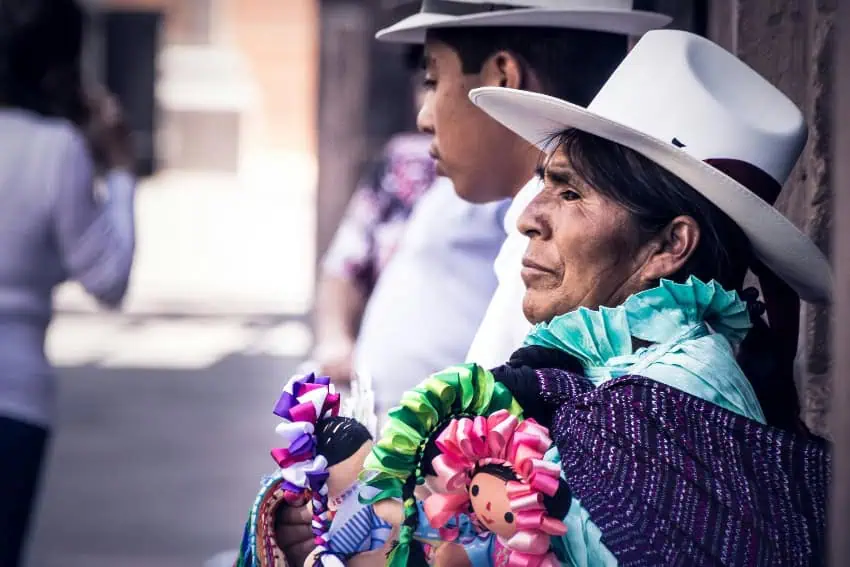
You can also add on to names. The suffixes “del Niño Jesus” and “de la Santísima Concepción” add some extra spiritual or religious oomph. Luckily for people who don’t particularly love their names, there are plenty of diminutives to choose from.
Indigenous names and names from nature
These are some of my favorites, the Mexican equivalents of hippie parents who name their kids “Rainbow” or something.
Some are more or less common: I’ve always said if I had triplet girls, for example, that I’d name them Sol (Sun), Luna (Moon), and Estrella (Star). Others are a little less common; I’ve met both a Brisa (Breeze) and a Caracol (Snail)! I’m not sure why Río isn’t in style, but it should be.
A few names in the Indigenous language Nahuatl have maintained their popularity as modern names. Xóchitl is a semi-popular one for girls — a candidate in the last presidential election comes to mind — and I’ve heard Saxchil too. I’ve heard Iluicatl and Tonatiuh as names for boys.
Feel like sticking it to the Spaniards? Refusing to use one of their colonist names for your kid is not the worst way to do it!
Trendy Mexican names
Just like in other countries, stylish names in Mexico come and go — not unlike all the Sarahs in my class. When I taught high school — i.e., kids born in the early ‘90s — my classrooms were full of Andreas, María Fernandas and Sofías. I also had lots of Alejandros and Davids, and plenty of Rodrigos.

These days, if you go into an elementary school, you could throw a rock and be likely to hit a Santiago, Valeria or Mateo. They’re good names — like Sarah. But I bet they’ll wish later that they didn’t have to share them with so many people!
So what else have you got? Let us know some of your most fun and surprising name discoveries in the comments below.
Sarah DeVries is a writer and translator based in Xalapa, Veracruz. She can be reached through her website, sarahedevries.substack.com.
Opposition Senator Téllez tells Fox News that Mexicans want US help against the cartels

Mexican Senator Lilly Téllez engaged in a war of words with President Claudia Sheinbaum Thursday and Friday after telling Fox News that most Mexicans would welcome U.S. assistance in the war against drug cartels.
Téllez, a member of the conservative National Action Party (PAN), angered President Sheinbaum and members of the ruling Morena party by referring to them on Wednesday as narco-politicians resisting the U.S. offer to battle the cartels.
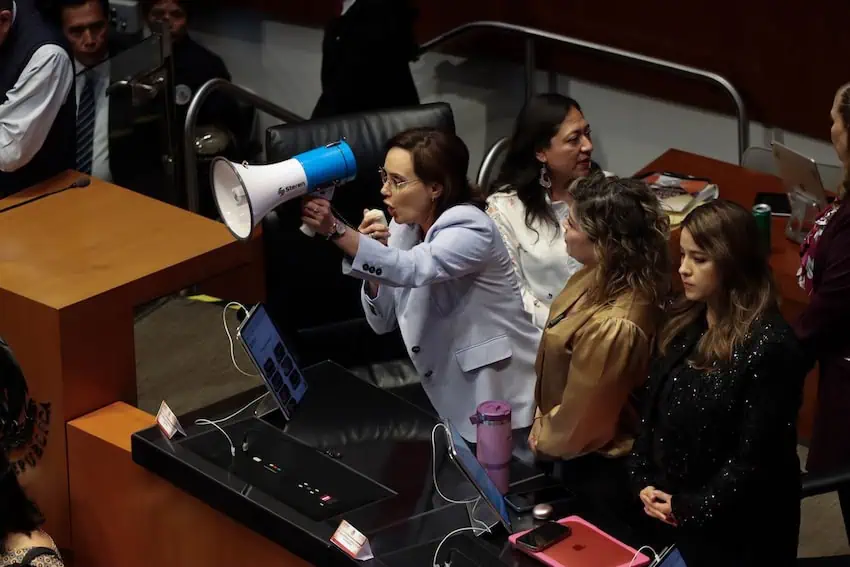
Sheinbaum responded on Thursday by calling Téllez a traitor for encouraging U.S. intervention.
“It’s not a minor issue that a senator gave an interview to a foreign media outlet calling for intervention,” Sheinbaum said.
Téllez clapped back Friday with a lengthy statement on social media, contending she said no such thing.
“What I said was ‘help’ (cooperation and consent), not ‘intervention’ (violation of sovereignty). … Speaking of help is a political act that is realized through the will of the parties, it is freedom of expression and parliamentary inviolability, not a crime,” she wrote.
During Wednesday’s appearance on Fox Noticias, Téllez told Rachel Campos-Duffy that the U.S. offer to help Mexico fight drug cartels “is absolutely welcome,” assuring the Fox News host that “this is the opinion of the majority of Mexicans.”
“The only people opposed to the offer to help us … are the narco-politicians, which includes President Sheinbaum and her entire group,” Téllez said, pointing to the president’s recent endorsement of Morena Senator Adán Augusto López.
López is accused by the opposition of ties to organized crime in the state of Tabasco, stemming from his relationship to his hand-picked state security minister Hernán Bermúdez, a fugitive who is the alleged leader of the La Barredora crime gang.
On Tuesday, Sheinbaum ratified López as the leader of the Morena caucus in the Senate.
Telléz, a former member of Morena, said the ratification proves that the Sheinbaum administration is “infiltrated by the drug cartels,” which have been labeled as terrorists by the U.S. government.
“This government is clearly associated with the cartels,” she said, adding that this is why Sheinbaum has been “angered by [U.S. President Donald] Trump’s offer to help” while her administration “is doing everything it can to obstruct” U.S. efforts to take on the drug cartels.
🚨 EXHIBE SHEINBAUM A LA VENDEPATRIAS de Lilly Téllez por ir a Fox News y pedir la int3rvención de Estados Unidos.
¡PERO PRONTO SE LE BORRARÁ LA SONRISA A LA ETERNA PLURINOMINAL! pic.twitter.com/0O10vLRCGO
— Morena Noticias (@Morena_Durango_) August 22, 2025
The PAN senator said Mexicans are fed up with the violence and corruption cultivated by organized crime gangs, asserting her view that Morena is protecting the cartels, which is “the genuine treason against the homeland.”
Téllez also criticized Sheinbaum’s foreign policy stance, accusing her of preferring ideological alliances (citing Venezuela and Cuba) over security cooperations (citing Sheinbaum’s public denial of cooperation with the U.S. Drug Enforcement Administration).
With reports from El Universal, El Imparcial and Fox News
US bombing of Mexican cartels ‘won’t happen,’ Sheinbaum says: Friday’s mañanera recapped
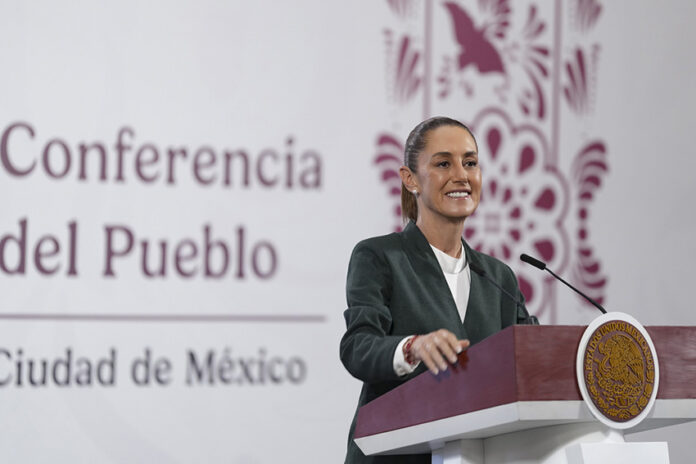
At her Friday morning press conference, President Claudia Sheinbaum responded forcefully when asked about the possibility of the United States military bombing cartel targets on Mexican soil.
During her final mañanera of the week, the president also revealed that her Foreign Affairs Minister had spoken to the United States Ambassador to Mexico about a statement issued by the Drug Enforcement Administration (DEA) on Monday.
US bomb attack against Mexican cartels ‘won’t happen,’ Sheinbaum says
A reporter referred to remarks made on Thursday by DEA Administrator Terrance Cole, telling the president that he “didn’t dare to rule out the possibility that President Trump might carry out a bombing in Mexican territory against drug cartels.”
She asked Sheinbaum whether she saw a U.S. strike against cartels as a possibility.
“No,” the president said emphatically before pausing for five seconds to give even more emphasis to her response.
“Mexico is a free, independent and sovereign country, and no foreign government would dare to violate our sovereignty,” Sheinbaum declared.
▶️ “México es un país libre, independiente y soberano y ningún gobierno extranjero se atrevería a violar nuestra soberanía”: Sheinbaum descarta bombardeo de EU contra cárteles
📺 Sigue #LaMañaneraDelPueblo en @mileniotv pic.twitter.com/M6U8aiVYkD
— Milenio (@Milenio) August 22, 2025
“It’s not like before. Mexico has a lot of strength — national and international [strength] because of our people, because of what we represent as a government of the people,” she said.
“So, no, that won’t happen,” she said, referring to the possibility of a U.S. bombing against cartels in Mexico.
In an interview with Fox News on Thursday, Cole was asked whether he would “support the bombing of the Mexican drug cartels.”
He responded:
“So I know that’s been in the paper the last few days. I know that decision lies with the president. The men and women of the DEA will support the decision that comes from the president. We will complete the mission, but let’s remember we have been at war with these cartels for the last 40 years. The men and women of DEA have been consistent, they’ve been at the forefront, they’ve been at the tip of the spear, this is what we do and we will continue to support the mission and the orders that come down from the president of the United States.”
His remarks came two weeks after The New York Times reported that Trump had “secretly signed a directive to the Pentagon to begin using military force against certain Latin American drug cartels that his administration has deemed terrorist organizations.”
On Friday morning, Sheinbaum suggested that her government would consider a U.S. bomb strike on Mexican cartels as an act of war against Mexico.
“As I’ve said: any attempt, we have the national anthem, [el cielo] un soldado en cada hijo te dio,” she said.
The English translation of that line of the (bellicose) Mexican national anthem is “heaven gave you a soldier in every son.”
Sheinbaum: Foreign minister spoke to US ambassador about DEA statement
Sheinbaum told reporters that Foreign Affairs Minister Juan Ramón de la Fuente spoke to U.S. Ambassador to Mexico Ron Johnson on Tuesday about the statement the DEA released on Monday.
In its statement, the DEA announced what it called a “bold bilateral initiative to dismantle cartel gatekeepers and combat synthetic drug trafficking.”
Sheinbaum subsequently said that Mexico hadn’t agreed to participate in any such initiative. She told reporters on Tuesday that de la Fuente would speak to Johnson and ask him why the DEA statement was published without the knowledge of the Mexican government.
Sheinbaum denies DEA agreement on anti-cartel operation, calls agency statement unauthorized
Sheinbaum said on Friday that Mexico’s foreign minister told the ambassador that “information provided by U.S. government institutions” — when the information pertains to the security relationship between Mexico and the U.S. — “has to be within the framework” of agreed cooperation between the two countries.
“And the ambassador agreed,” she said.
Sheinbaum stressed that Mexico wants to collaborate with the United States on security issues, but doesn’t want the U.S. government to issue “statements that provide incorrect information.”
By Mexico News Daily chief staff writer Peter Davies (peter.davies@mexiconewsdaily.com)
Why do Mexicans use ‘usted’ as a way to show respect?

Growing up, I went to a bilingual school. The curriculum was equally divided into English and Spanish lessons, which were taught in equal depth. I recall having my Spanish classes, like math or biology, in the morning. Then, after recess, the English teacher would cover grammar, spelling or vocabulary.
As an absolute nerd, I often approached the teacher, Miss Riley, with questions, out of sheer curiosity. One of them was how to use the word “usted” in English. Bewildered, she explained that respect was shown differently in English. The word “you” was used to address everyone, I remember her saying, from the elderly to your superiors at work.

I found that kind of disappointing. As someone born in a traditional Mexican household, I wanted to be able to show respect to her and anyone I felt needed it, just like I did in Spanish.
To further understand why we use “usted” in Mexico, I contacted Linguist Cristal Yeseidy Cepeda Ruíz. With a Ph.D. in Linguistics from the National Autonomous University of Mexico (UNAM), Dr. Cepeda has dedicated decades to studying the use of usted in Mexico and other Latin American countries.
According to her research, in addition to being a sign of respect, the use of usted in Mexico implies social class relations. In some cases, it marks gender distance as well. Through decades of research into the linguistic origin of the word, these have been her findings.
Is the use of ‘usted’ a question of social class in Mexico, historically speaking?
“The origin of the pronoun usted,” Dr. Cepeda explained, “is associated with several social and linguistic factors.” According to her research, up until the 15th century “Castilian Spanish had two pronouns inherited from Latin: ‘tu’ (yes, without an accent) and ‘vos.'” The former was used “to address people who were close,” while the latter “was used to mark interpersonal distance and was used in exchanges among the bourgeoisie.”
This suggests that there was a social-class distinction in the way people referred to each other in Spanish. In other words, for family and friends, people already use tú. Whereas vos was reserved as a distinctive way to address those who belonged to a higher social status. Additionally, usted comes from the phrase “vuestra merced,” a way to suggest a higher hierarchy that was commonly used in Europe in the 15th century.
During the 16th and 17th centuries, during the colonial period in the Americas, “American Spanish (particularly that of the territories now occupied by Mexico, Peru, and Colombia) inherited the ternary pronominal system from Castilian Spanish (tú, vos, vuestra merced, usted),” Cepeda explained. Little has changed ever since.
Migrants from Europe — conquistadors, settlers, state officials and missionaries alike — began using these pronouns in the Americas too, which resulted in the use of “tú” for intimate relationships, and “vos” in “the treatment that Spaniards and Creoles used toward Indigenous populations
Is the use of ‘usted’ reverential in Mexico?
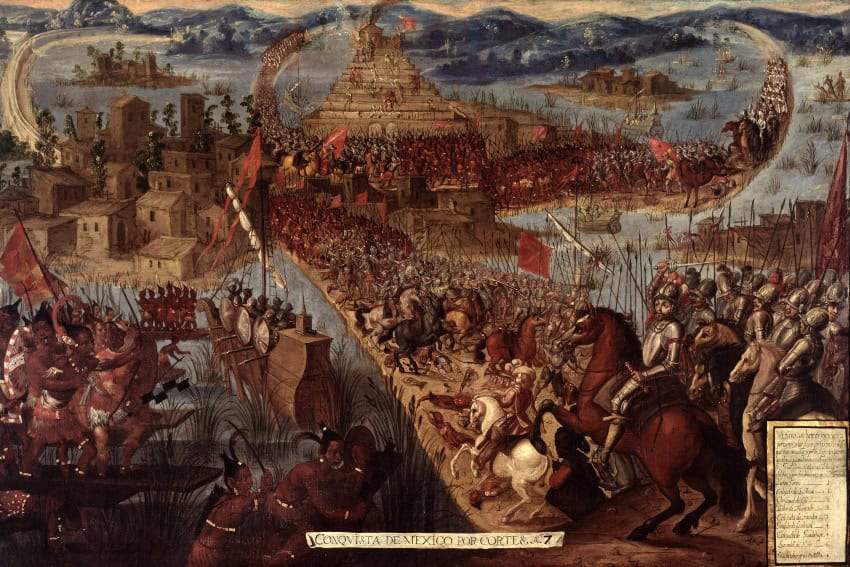
Before the Spanish invasion of the Americas, Cepeda said, people who spoke classical Náhuatl, the common tongue of the Mexica, used a “complex system of honorifics marked with suffixes.” In other words, social class was distinguished in the way you referred to others. During the Mexica empire, for example, one would have never spoken to the Huey Tlatoani, the emperor, in the same way as to a friend or a servant.
The social differences implied in classical Náhuatl were much more pronounced than in Castilian Spanish, Cepeda explained. It separated “interactions of utmost respect or reverence from others in which the main value is symmetry, reciprocity or affiliation between people.” Among them, the reverential use of the —tzin suffix was popular. At the time, it was used both as a diminutive and to imply reverence.
To date, however, there does not appear to be a link between “the use of ‘usted’ and the more reverential forms of address in native languages,” Cepeda said. What is certain, she pointed out, is that “the world’s languages reflect a regular pattern; the people who use them need to distinguish two clear planes [proximity, and that of social class].”
The use of usted in Mexico is not always reverential
After more than five centuries, the use of the usted has changed in Mexico. The ancient boundaries have become blurred in Mexico City. Although in some neighborhoods, as in the provinces, children address their parents and grandparents using the word usted, I don’t use it. No one in my close social group does. Are we leaving a centuries-old tradition behind? Not exactly.
Through her research, Cepeda and her colleagues have found that, in contemporary Mexican Spanish, “the most frequent, but not categorical, form of address in Mexico City is ‘tú.’ ‘Usted’ is employed in formal contexts,” the specialist wrote, “with older people and authority figures, especially outside the family context.”
Is the use of usted changing in the modern world?
Just as it was more than 500 years ago, the use of usted in Mexico stands out in situations where the value of asymmetry or differentiation between people predominates. Thinking in a contemporary, everyday example, whenever I go to the market to buy my groceries, I address my vegetable vendor with usted. Why? Because she is older than me, and I feel she deserves respect, otherwise, my interaction with her would be considered rude or even irreverent. The same goes for teachers, physicians or researchers.
That is not the only use it has today, however.
“A particular finding from Mexico City is that women prefer to use usted in situations where they feel vulnerable,” Cepeda said. “For example, with unknown men. This is a discursive strategy of autonomy that allows them to set boundaries.”
And yes, in case you’re wondering, I addressed Dr. Cepeda with usted in the interview for this article.
Andrea Fischer contributes to the features desk at Mexico News Daily. She has edited and written for National Geographic en Español and Muy Interesante México, and continues to be an advocate for anything that screams science. Or yoga. Or both.
Netflix announces ‘México 86,’ the twisted tale of Mexico’s last World Cup, starring Diego Luna

Before Mexico submerges itself into the fervor of co-hosting the FIFA World Cup men’s soccer tournament next summer, Netflix will be turning back the clock with “México 86,” starring Diego Luna.
The feature-length film — still in production — is a satirical retelling of how Mexico landed the 1986 World Cup after Colombia withdrew due to economic and political problems.

Though no release date has been disclosed, Netflix is expected to premiere it ahead of next year’s World Cup, which will open June 11 at Estadio Banorte, the renamed Estadio Azteca in Mexico City. The United States and Canada will also be hosting games in the 39-day tournament.
“México 86” is directed by Gabriel Ripstein, the son of acclaimed Mexican director Arturo Ripstein and the grandson of Alfredo Ripstein, a prolific producer during Mexico’s Golden Age of Cinema starting in the early 1940s.
Netflix last week announced a handful of Mexican films that it is working on — in part due to the success in recent years of “Roma” and “Pedro Páramo” on the platform.
The streaming giant made the announcement on Día Nacional del Cine Mexicano, or Mexican Film Day, which honors the country’s film industry, its history and its impact on Mexican culture. It takes place every year on Aug. 15 — the anniversary of the first public film screening in Mexico in 1896.
“Sharing the different faces of Mexico through each new production represents an opportunity to showcase the country’s richness and diversity to the world,” said Carolina Leconte, Netflix’s vice president of content for Mexico.
“México 86” is part of Netflix’s ambitious push into Mexican cinema that Netflix executive Ted Sarandos announced in February alongside President Claudia Sheinbaum. He said Netflix will invest US $1 billion in Mexican film and television production over the next four years.
“México 86” stars Luna, a major star in Mexico and beyond. He first gained fame 24 years ago in “Y Tu Mamá También” and has gone on to star in Hollywood blockbusters such as “Rogue One: A Star Wars Story” and in series such as Netflix’s “Narcos: Mexico.”
The film will focus on how what was supposed to be Colombia’s big moment on the world stage became Mexico’s instead — as a cadre of determined officials led a “crazy gamble” (as Netflix describes it) to pull off what many deemed impossible.
“Aura”, el clásico literario, llegará a Netflix 😱📚 ¡Será adaptado por Alonso Ruiz Palacios! Te contamos 👇🏼https://t.co/jjsgkvr6Te
— DÓNDE IR (@DONDEIRweb) August 16, 2025
“México 86” stars Luna, a major star in Mexico and beyond. He first gained fame 24 years ago in “Y Tu Mamá También” and has gone on to star in Hollywood blockbusters such as “Rogue One: A Star Wars Story” and in series such as Netflix’s “Narcos: Mexico.”
The film will focus on how what was supposed to be Colombia’s big moment on the world stage became Mexico’s instead — as a cadre of determined officials led a “crazy gamble” (as Netflix describes it) to pull off what many deemed impossible.
Colombia officially withdrew in November 1982 due to being unable to meet FIFA’s requirements, and Mexico was awarded the tournament in May 1983, giving it just over three years to prepare.
The film dives into machinations, wild bets and “pure Mexican ingenuity” that sealed the deal.
“It may seem like a simple story that is only possible in Mexico, but the story questions the guidelines, bureaucracy, politics and power — all told with humor and satire,” said Leconte.
The other Mexican films Netflix is working on:
- “Aura,” a screen adaptation of literary legend Carlos Fuentes’s novel from 1962 about a young historian meeting a mysterious woman while working on her late uncle’s memoirs. Alonso Ruizpalacios, whose feature debut “Güeros” earned five Ariel Awards in 2015, wrote the script and is directing.
- “Contra el huracán” (“Against the Hurricane”), an action-drama from Mexican director Jorge Michel Grau. It’s about two half-brothers fighting for survival on their small boat when an unexpected storm turns into Category 5 Hurricane Otis off the coast of Acapulco in October 2023.
- “La hora de los valientes” (“The Hour of the Brave”), a comedy in which a psychoanalyst sentenced to community service is assigned to provide therapy to a police officer devastated by his wife’s infidelity.
- “Un hijo propio” (“A Child of One’s Own”) is the working title of a film that follows a woman whose fake pregnancy turns into a nationwide scandal. Directed by two-time Oscar nominee Maite Alberdi of Chile, Netflix calls it “a feature-length documentary” though its connection to actual events is murky.
- “Las locuras” (“The Madness”), a previously announced film that will hit select theaters and Netflix in November. The story intertwines the tales of six women who, amidst self-censorship and family and social pressure, embrace their emotions and decide to break free.
Official release dates for all the films remain under wraps.
With reports from Quién, Netflix, Milenio and Bloomberg Linéa
Ready to live your Mexican Period Drama? Dine at the Gran Cantina Filomeno

I’m a sucker for a good cantina. I’m also a big fan of Porfirian architecture. Mexico City, to my delight, is a hotbed of those eye-catching façades blending French, neoclassical, and Mexican design elements. So when my date invited me to dinner at the new Gran Cantina Filomeno, an optimal mix, I all but ran there in my kitten heels. Obviously, I was elevating my look — and my height — for this elegant outing.
We arrived together at the double marble staircase encased by an iron-wrought rotunda, crowned by a bronze bull suspended in mid-air. What my date didn’t know was that as I ascended the grand entrance, I imagined for a brief minute that I was an aristocratic lady of a bygone Mexico, donning an elegant Belle Époque gown. A welcoming hostess guided us around a wooden bar into a lively dining room with high ceilings clad in dangling ivy. With each step, I delved deeper into Mexico’s storied pre-Revolutionary past, thanks to an abundance of 19th-century artworks that include Victorian furniture, original stained-glass windows and ornate crystal chandeliers.

We slipped into carved wooden seats as she handed us each a bound menu with the letter F inscribed in gold. I thumbed through the various pages of Mexican specialties before stopping on a short blurb of the cantina’s history. Wow, I thought, this place isn’t a cantina, it’s a living museum.
And that’s when I decided to write an article about it.
The wild journey of a Mexico City mansion
From a millionaire’s mansion to a refuge for Spanish exiles, a girls’ boarding school to a famous art gallery, Rio de Janeiro 54 has lived a full Mexico City life.
The mansion-turned-restaurant’s origins can be traced back to the early 1900s. That’s when Daniel Ruiz Benítez, architect and builder, oversaw its construction as a single-family home on the southeast corner of Parque Rio de Janeiro. Its sophisticated style satisfied the design preferences of Mexico City’s elite of the time, many of whom rose to prominence during the then recently ended Porfirio Díaz regime, and who heavily favored French and Neoclassical architecture.
In the late 1930s, during the presidency of Lázaro Cárdenas, the private mansion transformed into Casa de España, becoming a refuge for Spanish intellectual exiles fleeing Franco’s dictatorship. The exile community soon became El Colegio de México, where refugees joined Mexican scholars in advanced humanities and social sciences research. Some of these residents would become household names. Alfonso Reyes, for example, served as the college’s first president. Nobel Prize-winning poet Octavio Paz had an office on the ground floor, and notable scholars like Daniel Cosío Villegas and José Gaos also worked there. Even avant-garde filmmaker Alejandro Jodorowsky lived in the annex next door.
By the mid-20th century, Rio de Janeiro 54 went from housing Mexico’s intellectual elite to becoming a Catholic boarding school for girls. For decades, it remained a female-only residence until the 1980s brought another dramatic transformation.
From art gallery to restaurant

For the next 30 years, the mansion housed contemporary artwork as the renowned OMR Gallery, founded by Patricia Ortiz Monasterio and Jaime Riestra. The gallery became one of Latin America’s most influential contemporary art spaces, helping establish Roma Norte as Mexico City’s arts district. Where Octavio Paz once pondered poetry, cutting-edge artists like Gabriel Rico and Jose Dávila now displayed their work.
OMR Gallery moved to Calle Córdoba in 2015, and that’s when this building’s latest, and perhaps most theatrical, chapter began.
The Filomeno fantasy
The cantina’s transformation started with a novel. In 2010, Daniel Liebsohn — one of Mexico’s leading antiquarians and art collectors — published “Filomeno,” chronicling the adventures of a handsome charro living in the final years of the Porfiriato era. Liebsohn, together with partners Santiago García Galván and George Diamandopoulos, decided to bring his fictional world to life by transforming Rio de Janeiro 54 into a living museum of Mexico’s aristocratic past.
But here’s the fun part: nobody’s quite sure if Filomeno was real or invented. The cantina displays a striking 1909 portrait of the dashing charro Filomeno, complete with a rather pronounced backside that draws every diner’s eye. Actual person or fictional character? Una nunca sabe, and that’s part of the charm.
150 antiques and one very patient team
Transforming this space into an authentic period cantina meant preserving every possible original detail while both making room for a flourishing restaurant and meeting complex safety codes. The restoration, completed in 2024 after OMR Gallery’s departure in 2015, kept the century-old stained glass windows, hand-painted wooden panels and Austrian crystal chandeliers that had survived over a century of career changes.
The team sourced and installed over 150 authentic pieces from the 1880s to 1915. One centerpiece, a monumental 19th-century Victorian showcase from an old pharmacy, is completely original. The portrait gallery is particularly striking. While each painting evokes period elegance, many are downright entertaining. “Carmencita,” for example, shows a stout child in a blue dress sporting an expression of absolute boredom.
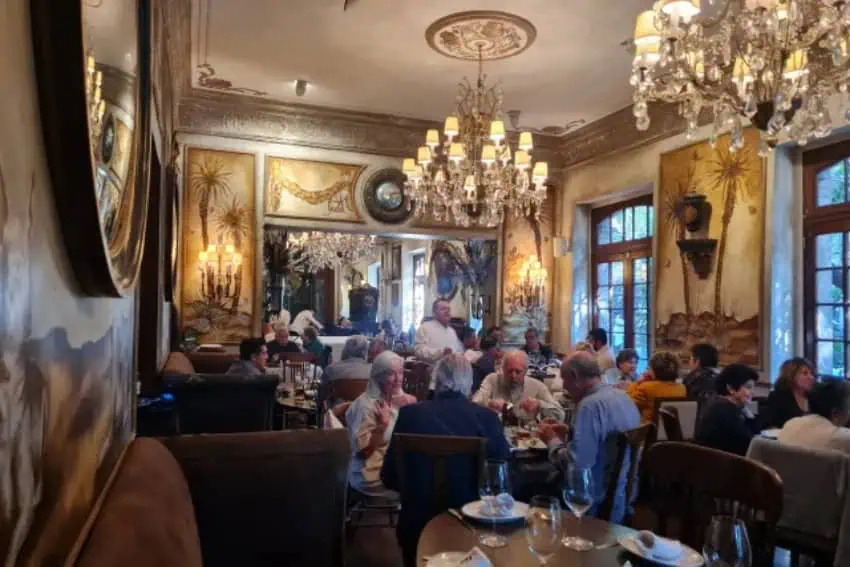
Just like Liebsohn’s novel, the cantina offers a playful, slightly tongue-in-cheek take on Mexican high society during the opulent Porfiriato era.
Dining where poets once worked
An impeccably-dressed waiter gently places a steaming fish fillet in front of me and refills my wine. Before I can take a bite, a mariachi band approaches our table. When my date politely declines a private ballad (grounds for removal!), the singer turns to me. “Would you like to request a song for the gentleman?” I briefly consider it, then decide I’d prefer to eat. “Next time,” we promise, and the band wanders off to another, hopefully more engaging, pair.
The menu was crafted by Chef Alfredo González Rivas, who researched traditional cantina dishes that once brought together Mexico’s working and elite classes. During the Porfiriato era, cantinas served as spaces for debate and networking, making them perfect venues for both business deals and social gatherings. You’ll find options like sopes de tuétano (bone marrow sopes) and chamorro en su jugo alongside classics like mole poblano and Baja fish tacos. Food arrives on glassware, ceramics, and silver-plated serveware reminiscent of the turn of the 20th century.
It’s surreal to think that within this space, Octavio Paz once had an office, Spanish exiles once hid from a dictatorship, and boarding school girls from the countryside studied. And here I am, stuffing my face with guacamole.
A building that refuses to be boring
As our evening wound down and the mariachi band serenaded other tables, I marveled at this building’s refusal to fade into obscurity. While many historic mansions crumble or turn into museums where you can’t touch anything, this one continues to reinvent itself while staying true to its elegant bones.
Before leaving, my date and I take a quick tour and then split momentarily to visit the restroom. While washing my hands, I notice that the walls are adorned with rather risqué posters of handsome Mexican men. I swear I took a photo. Only, I can’t find it in the stacks of visual snapshots that live in my Photos App. Was it real? Or did I imagine it? I guess, in the end, it doesn’t matter.
View this post on Instagram
Whether Filomeno was real or invented hardly matters either. What matters is that this building — with its century of wild career changes — proves that the best way to honor the past might just be to keep living in it, one dinner at a time.
Bethany Platanella is a travel planner and lifestyle writer based in Mexico City. She lives for the dopamine hit that comes directly after booking a plane ticket, exploring local markets, practicing yoga and munching on fresh tortillas. Sign up to receive her Sunday Love Letters to your inbox, peruse her blog or follow her on Instagram.
Over 30,000 new street cameras will make CDMX the most monitored city in the Americas

Mexico City is on its way to becoming “the most heavily monitored city in the Americas,” according to Mayor Clara Brugada.
As part of an ambitious expansion program for its public video surveillance network, the capital is investing over 445 million pesos (US $23 million) to install 30,400 new security cameras on the streets of the city. The expansion will bring the number of cameras to 113,814 across the city’s 16 boroughs — 36% more than in 2024.
En #LaCapitalDeLaTransformación, gobernada por @ClaraBrugadaM, damos un paso histórico en la videoseguridad. 📈📹
Gracias al proyecto #OjosDeLaCiudad 👀📹 ahora la #CDMX contará con más de 30 mil nuevas cámaras de videovigilancia conectadas al #C5CDMX para garantizar tu… pic.twitter.com/onGyohOJU2— C5 CDMX (@C5_CDMX) August 19, 2025
That total includes 15,200 totems — also known as smart poles — that will be installed in areas with high crime rates, relevant urban facilities, and tourist public spaces, according to Salvador Guerrero Chiprés, general coordinator of the Command, Control, Computing, Communications and Citizen Contact Center of Mexico City (C5).
Each totem holds two cameras — one fixed and one with a 360-degree view, designed for urban monitoring. They feature help buttons and audiovisual alert systems, enabling rapid response to emergencies or crimes. They will also send automatic notifications to authorities when they experience a fault, removing the need for citizens or officials to report them.
During a press conference held at the C5 headquarters, Brugada noted that the new cameras will strengthen the security strategy and guarantee immediate assistance in any emergency. She said that with the additional cameras Mexico City will double or even triple the number of security cameras found in cities like New York, Chicago and Rio de Janeiro.
Do cameras help reduce crime in Mexico City?
Following the rollout of surveillance cameras and the creation of the “Safe City” program in 2010, high-impact crimes in Mexico City decreased by 23%, including a 25% drop in vehicle theft and a 20% drop in pedestrian robbery.
However, official data shows that although some types of crime (homicide, for example) have decreased in recent years at the national and local levels, others like extortion have significantly increased.
While surveillance cameras have contributed to the reduction of some crimes in Mexico City, especially in the first years after their installation, fluctuations in crimes reveal that they are not a stand-alone solution to reduce urban crime. Some studies cast doubt on whether they have any effect at all, but Mexico City’s experience shows they can at least serve as one tool within a broader security strategy.
With reports from La Jornada and Grupo Hoy México
Foreign investment is setting records in a tough economy. How did Mexico pull it off?
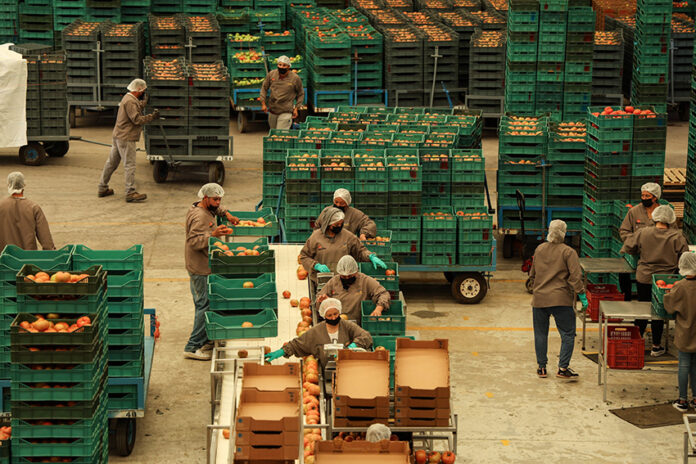
Mexico continues to attract record amounts of foreign direct investment (FDI), with new investments soaring well above US $3 billion during the first six months of 2025, more than triple the same period last year. Total FDI, which includes reinvested profits, also showed a significant increase.
The latest report from the Economy Ministry (SE) shows that total FDI for the first six months of the year rose to nearly US $34.3 billion, continuing a steady climb after Mexico hit a record high of US $21.4 billion in the year’s first quarter.
The six-month figure reflected a 10.2% increase in total FDI over the same period in 2024 (which itself was a record). The increase is the continuation of a positive trend going back to 2021, when Mexico began to recover from the first year of the pandemic.Last year’s January-June FDI performance was 7.1% better than the same period in 2023.
Most impressively, Mexico is set to capture US $3.1 billion in new investments as part of its FDI inflows thus far this year. The SE said that amount is the most new FDI reported in the past 12 quarters.
“[The new investments] reaffirm the interest that foreign investors maintain in our country, despite the global economic and political landscape,” the SE said.
The inflows are arriving despite the protectionist trade policies implemented by the U.S. (Mexico’s No. 1 trading partner) and a weakening global economic outlook that the Organisation for Economic Cooperation and Development ascribes to “substantial trade barriers that are diminishing confidence and heightening policy uncertainty.”
So how is Mexico pulling this off?
Mexico boasts a robust network of trade agreements and a strategic location next to the world’s biggest economy (even as access to the U.S. market shrinks), making it an attractive destination for foreign investors seeking fertile ground for capital deployment.
A trade markets report by Banco Santander points out that Mexico also offers a big domestic market, a wide variety of natural resources, a well-qualified workforce and a diversified economy. Incentives introduced in 2023 for nearshoring in the semiconductor, electromobility and medical device sectors have also proven attractive.
These structural advantages have combined to create a favorable setting for business expansion even as global FDI declined by 11% in 2024, according to the United Nations.
The Pérez Correa González corporate law firm noted earlier this year that FDI is “increasingly entering sectors that have historically been less accessible to foreign capital.”
Its report identified sectors such as the food and beverage, chemical and agricultural processing industries as targets of new investment, although manufacturing still accounts for 36% of total FDI.
Mexico’s positive business environment is reflected in the fact that reinvestment of earnings remained high, reaching nearly US $29 billion. Such reinvestment accounted for 84.4% of total FDI through June.

Even though reinvestment of earnings registered a 4.5% decline compared to the first six months of last year, that decrease was offset by the record amount of new investments, which accounted for 9.2%.
Reinvestment of earnings corresponds to the portion of profits not distributed as dividends and is considered FDI because it represents an increase in capital resources owned by the foreign investor.
U.S. companies continue to be the dominant investors, accounting for nearly 43% of total FDI, down from 44.1% in 2024. Still, U.S. investments grew by US $986 million, rising from US $13.7 billion to US $14.7 billion.
Spain is second at 17.3% (US $5.9 billion), followed by Canada at 5.1% (US $1.75 billion), Japan at 4.2% (US $1.44 billion) and Germany at 3.7% (US $1.28 billion).
With reports from El Economista, El Financiero and La Jornada
